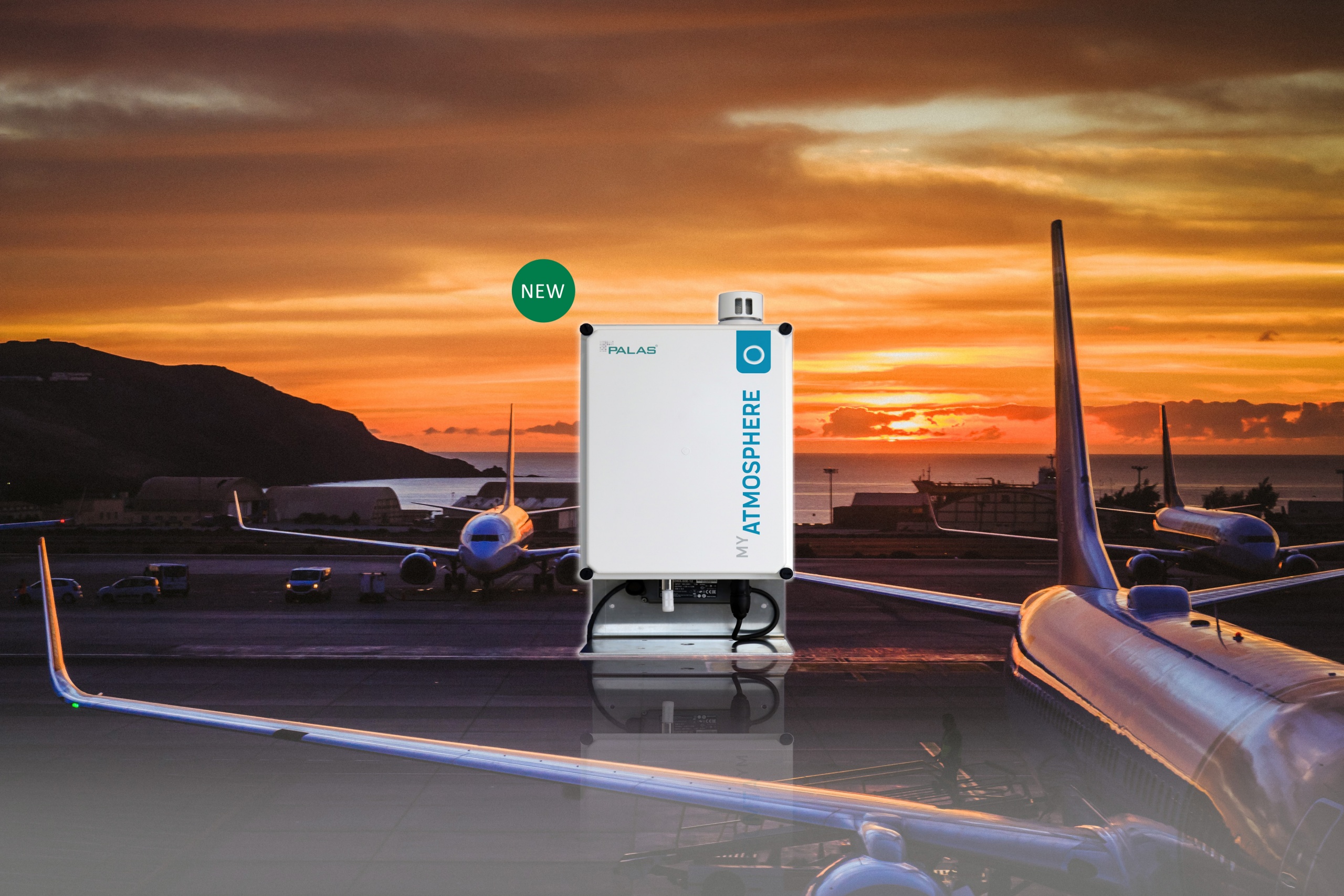The World Health Organization (WHO) has confirmed that ultrafine particles (UFP) have a significant impact on our health due to their ability to penetrate deep into our lungs. However, optical aerosol spectrometers can hardly detect them due to their small size. Palas® now brings the new AQ Guard Smart 2000 air quality monitor, providing a long-term reliable and economical solution for UFP monitoring.

Focus on UFP monitoring
One of the Palas® AQ Guard Smart series – AQ Guard Smart 2000 is designed for UFP monitoring in ambient air. In the unique principle of unipolar diffusion charger, it combines an ejector-based sampling method and air-jet charging.

Its measuring range of particle size is down to 0.01 μm, as well as number concentration up to 10,000,000 particles/cm3. The LDSA (Lung Deposited Surface Area) concentration is also provided by AQ Guard Smart 2000. LDSA is measured by multiplying the surface of a particle with the deposition probability in the lung. It’s a measure of the adverse health effects of aerosol particles, offering visual data support.
In addition, the plug-and-measure AQ Guard Smart 2000 is a cost-effective instrument. It can be used as an alternative to high-precision condensation counters for checking and comparing concentrations, or monitoring trends and deviations. Meanwhile, it can operate for a long time in unattended indoor and outdoor environments without the use of working fluids. AQ Guard Smart 2000 provides stable UFP number concentration data for different areas like seaports, airports, traffic junctions, main roads, etc.

Proven Monitoring Capabilities
AQ Guard Smart 2000 has versatile data transfer options including USB, LAN and Wi-Fi. Besides, data can be checked in Palas® MyAtmosphere. Via an optional programming interface (API), MyAtmosphere can also be integrated into users’ environments. The graph below shows a field application of AQ Guard Smart 2000 at a junction near Palas® GmbH. The UFP mean diameter and concentrations at different periods can be seen below.


A continuous increase in UFP concentrations and a decrease in UFP mean diameter from 1:00 to 7:00 a.m. can be seen in the graph. More ultrafine particles appeared in the air indicating that increased traffic from the distribution center and its exhaust gas would aggravate air pollution. Moreover, the data from AQ Guard Smart 2000 shows a very good initial correlation with highly accurate data from ENVI-CPC 100. AQ Guard Smart 2000 can help users to grasp UFP concentration in the air even without knowing the particle size.

The graph above shows the AQ Guard Smart 2000 and ENVI-CPC 100 monitoring at the same locations. It can be seen that at 10 p.m. on Saturday, the decreasing volume of truck transportation brought about the less UFP concentrations. After that, a new peak of UFP concentration came most likely from the new starting commercial traffic. The data from AQ Guard Smart 2000 and from ENVI-CPC 100 were in general agreement. Also, the laboratory tests show excellent linearity to the CPC 100.

The new AQ Guard Smart 2000 monitor not only closes the gap between classical condensation particle counters (CPC) and scanning electromobility particle size spectrometer (SMPS). It is also characterized by easy plug-and-measure operation and the ability to determine UFP concentrations without any working fluid. It will provide more technical support for long-term measurements indoors and outdoors, as well as for studies of pollution source formation and dispersion.
AQ Guard Smart 2000 air quality monitor for UFP

Advantages
- Simple and accurate monitoring of particle number concentration for UFP
- Fast commissioning and immediate acquisition of measured values via the MyAtmosphere cloud
- Situational configuration via Wi-Fi hotspot, remote access as well as external touchpad
- Communication via GPRS / 3G / 4G / Ethernet / Wi-Fi, optional: LoRaWAN
- Expandable with weather station
- Measurement of particle concentration as well as LDSA (Lung Deposited Surface
Area)
- Measuring range number 1,000 particles/cm³ < CN < 10,000,000 particles/cm3 from a size of 0.01 μm (10 nm)
- Measuring principle of diffusion charging (no refill of liquids or other consumerables needed)
- Reliable alternative or supplement to CPC systems
Applications
- Measurement UFP concentrations in and around airports and seaports
- Formation and dispersion studies
- Construction site and remediation areas with high traffic loads (high UFP)
- Immission monitoring of industrial plants
- Urban air quality monitoring
- Supplementary measurement of UFP concentrations at traffic sites
Palas® organizes a series of webinars on various topics to share professional knowledge of aerosol measurement technology. Palas® technical experts and industry scholars from all over the world will give you detailed online explanations. Welcome to register to attend and learn more about the webinars as soon as possible!
Topic: Palas® AQ Guard Smart 2000 new product launch introduction
Time: Thursday, April 20, 2023 14: 00 – 15: 00
Speaker: Ms. Jun Deng
Palas® Country Product Manager – Environmental & Automotive
Welcome to register for the conference!
Click here to register

